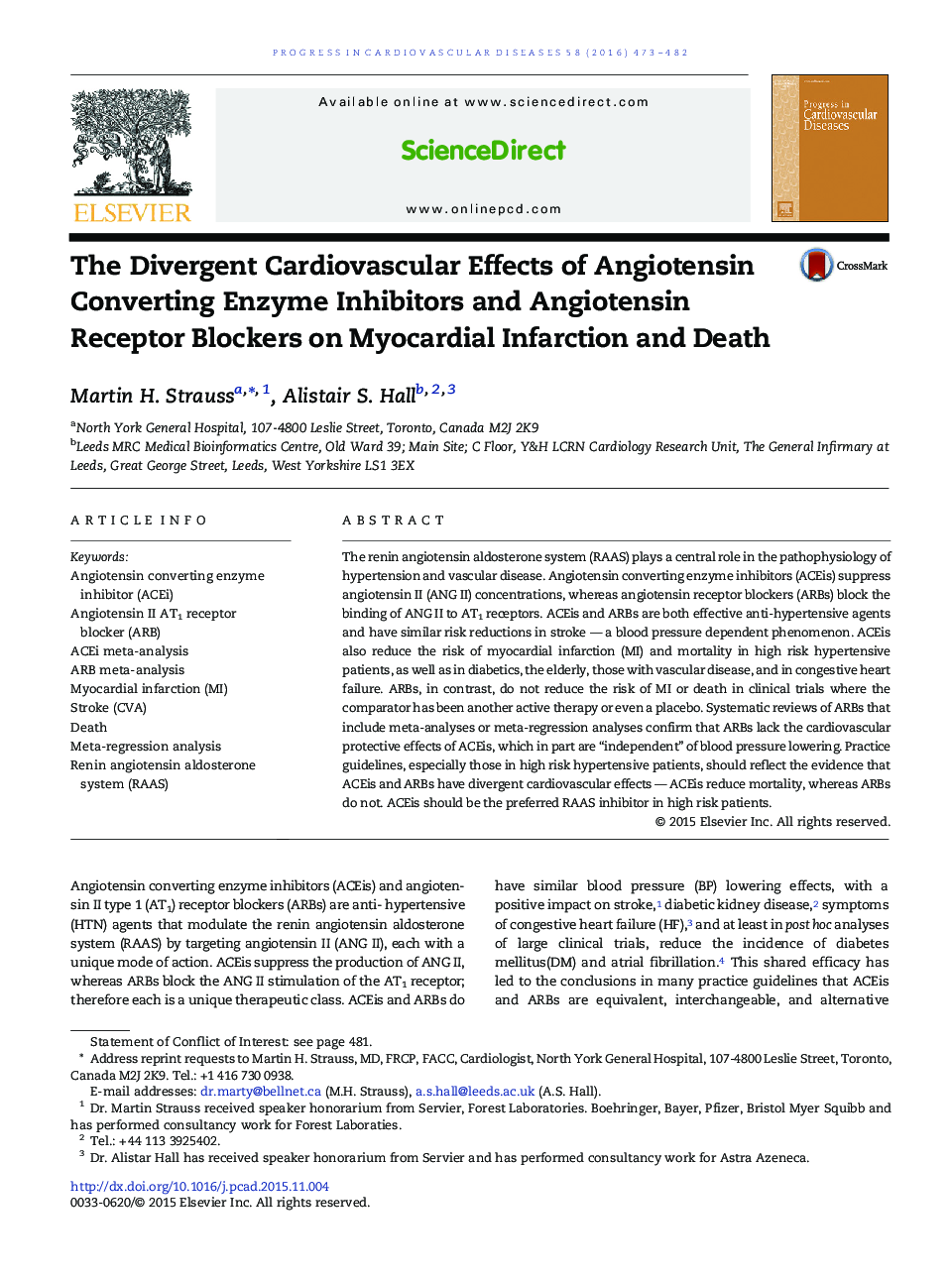| Article ID | Journal | Published Year | Pages | File Type |
|---|---|---|---|---|
| 3006207 | Progress in Cardiovascular Diseases | 2016 | 10 Pages |
The renin angiotensin aldosterone system (RAAS) plays a central role in the pathophysiology of hypertension and vascular disease. Angiotensin converting enzyme inhibitors (ACEis) suppress angiotensin II (ANG II) concentrations, whereas angiotensin receptor blockers (ARBs) block the binding of ANG II to AT1 receptors. ACEis and ARBs are both effective anti-hypertensive agents and have similar risk reductions in stroke — a blood pressure dependent phenomenon. ACEis also reduce the risk of myocardial infarction (MI) and mortality in high risk hypertensive patients, as well as in diabetics, the elderly, those with vascular disease, and in congestive heart failure. ARBs, in contrast, do not reduce the risk of MI or death in clinical trials where the comparator has been another active therapy or even a placebo. Systematic reviews of ARBs that include meta-analyses or meta-regression analyses confirm that ARBs lack the cardiovascular protective effects of ACEis, which in part are “independent” of blood pressure lowering. Practice guidelines, especially those in high risk hypertensive patients, should reflect the evidence that ACEis and ARBs have divergent cardiovascular effects — ACEis reduce mortality, whereas ARBs do not. ACEis should be the preferred RAAS inhibitor in high risk patients.
